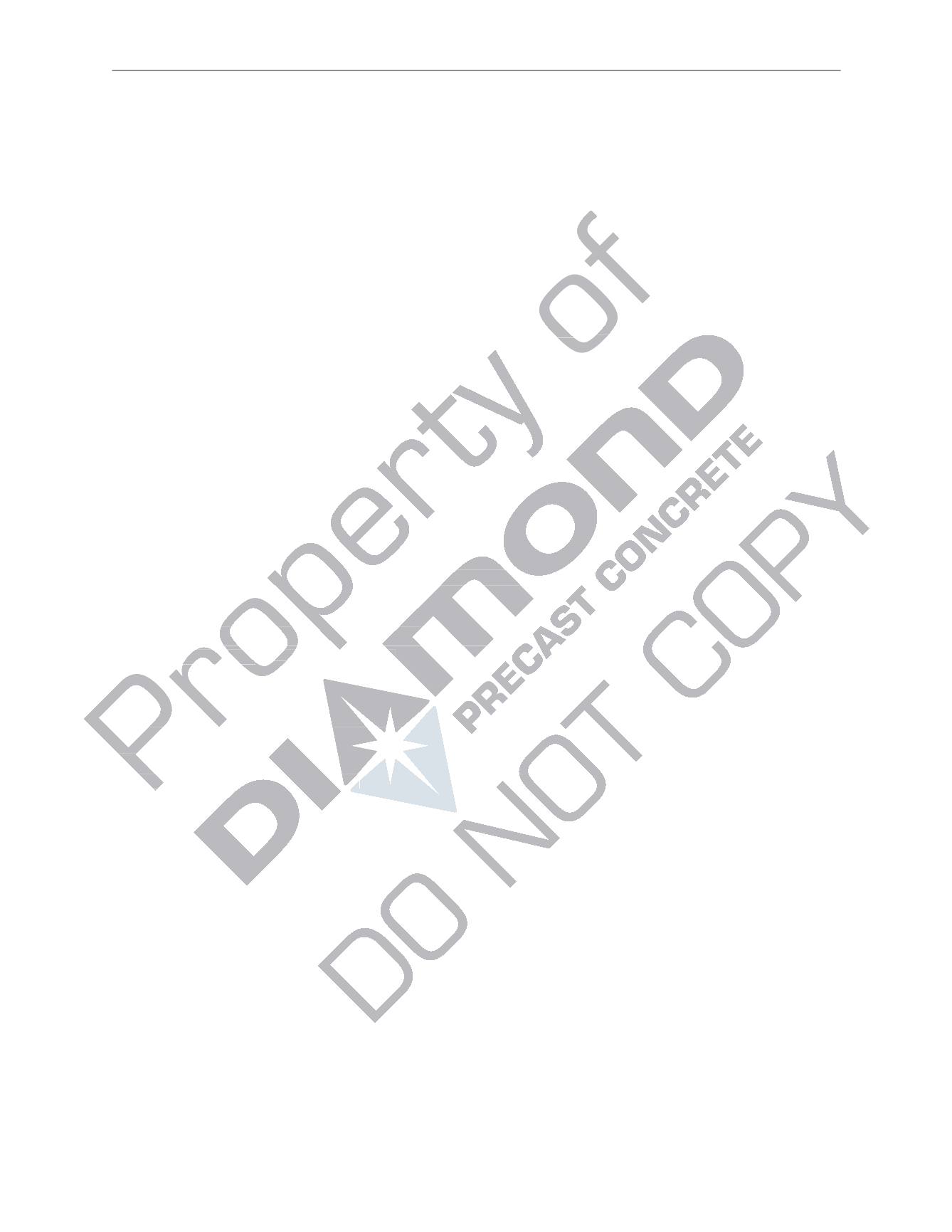

©
Canadian Standards Association
Precast concrete — Materials and construction
November 2009
19.7.2
The absorption of structural low-density aggregate, as defined in ASTM C330, shall not exceed 11% when
such aggregate is used in architectural concrete face mixes exposed to the weather.
Notes:
(1)
Low-density aggregate should not be used in exposed finishes in cold or humid climates unless the performance of the
finishes has been verified by tests or records of satisfactory usage under similar conditions.
(2)
In consolidation of lightweight concrete, precautions should be taken to avoid aggregate flotation caused by
over-vibration.
19.8 No-slump concrete
19.8.1
Test specimens shall be made in accordance with one of the following methods to determine the 28 d
strength:
(a) concrete cylinders made, cured, and tested in accordance with Test Method A23.2-12C in
CSA A23.2;
(b) drilled cores obtained and tested in accordance with Test Method A23.2-14C in CSA A23.2; or
(c) cubes sawn from the products and tested in accordance with ASTM C42/C42M.
The number of tests shall be as specified in
Clause 19.3.2
.
19.8.2
Intermediate strength levels, such as the strength at handling or transfer of the prestress force, shall be
determined by
(a) any of the methods specified in
Clause 19.8.1
; or
(b) rebound hammer or other non-destructive testing calibrated to a test specified in
Clause 19.8.1
.
Tendon slippage of pretensioned products shall be measured in accordance with
Clause 28.2.7.2
.
19.9 Low-permeability concrete
Low-permeability concrete shall be obtained by using exposure class C-1 concrete or, for added
protection, exposure class C-XL concrete.
20 Production of concrete
20.1 General
Production of concrete shall comply with Clause 5.2 of CSA A23.1 and
Clauses 20.2
to
20.6
of this
Standard.
Note:
Many architectural finishes are now available and new ones are constantly being developed. The more common
finishes and the means of achieving them are described in detail in publications such as PCI MNL-122 and the CPCI
Architectural Precast Concrete Colour & Texture Selection Guide
.
20.2 Mixers
Only stationary mixers shall be used for
(a) architectural precast concrete mixes; and
(b) mixes with a slump of less than 50 mm.
Notes:
(1)
Force mixers are preferred for the mixes specified in this Clause to provide the required uniformity.
(2)
Mixers should be provided with timing devices to prevent under- or over-mixing of the batch.
(3)
Mixers should be considered excessively worn and due for adjustment if the gap between the pan (or drum) and blades
exceeds one-fourth of the nominal maximum size of the coarse aggregate or
6 mm
, whichever is smaller.
Licensed for/Autorisé à Jed Friesen Sold by/vendu par CSA on/le June/18/2015.
~Single user license only. Storage, distribution or use on network prohibited. Permis d'utilisateur simple seulement.
Le stockage, la distribution ou l'utilisation sur le réseau est interdit.
















